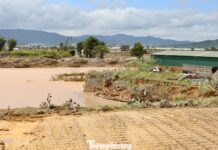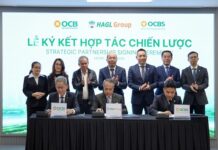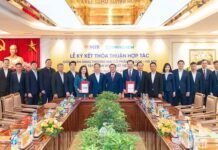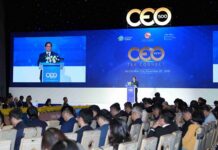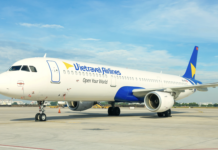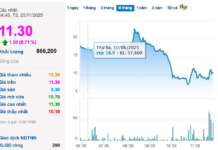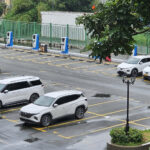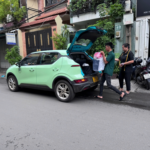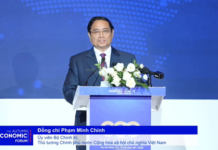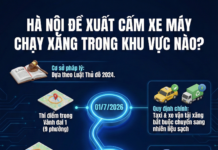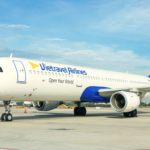The Green Path for Global Supply Chains
Kicking off the discussion, Mr. Ivan Petrov, Former President of the International Federation of Freight Forwarders Associations (FIATA) and CEO of Transexpress, emphasized the government’s role in shaping national logistics development strategies.
Mr. Ivan expressed his admiration for the Vietnamese government’s commitment to this sector, noting Prime Minister Pham Minh Chinh’s direct participation in the conference and his frequent engagements with the transportation business community.
“This is not a mere formality. I clearly sense the Vietnamese government’s determination to make logistics one of the three pillars of national economic development, with a focus on expanding trade corridors, free trade zones, and fostering public-private partnerships,” shared Mr. Petrov.
From a regional perspective, he also highlighted Vietnam’s significant opportunity to become a strategic transshipment hub in Asia, thanks to its favorable geographical location and the East-West and North-South economic corridors. However, to realize this potential, seamless coordination among transportation modes, particularly road, rail, and inland waterways, is essential.
Building on this momentum, Professor Bui Thien Thu from Okayama University (Japan), former Director General of Vietnam’s Inland Waterways Administration, offered a more detailed perspective on Vietnam’s natural advantages in developing water transportation.
He noted that Vietnam has over 42,000 km of rivers, with 17,000 km suitable for transportation, along with a 3,260 km coastline. Despite these resources, investment in water transportation remains minimal.
He cited that Vietnam ranks second only to China in infrastructure investment, accounting for about 5.7% of GDP. In 2024 alone, total transportation infrastructure investment reached approximately $27 billion, with 60% allocated to roads, 10% to railways, and only 2–2.5% to inland waterways.
“Meanwhile, waterways handle up to 20% of freight volume, compared to 50% for roads. In other words, with just 2% of investment, water transportation still carries one-fifth of total cargo,” the speaker analyzed.
According to Mr. Thu, increasing investment in water transportation will not only reduce traffic congestion and emissions but also lower maintenance costs, enhancing the economy’s competitiveness.
Offering a practical perspective from Vietnam, Mr. Tran Tien Dung, Chairman of MACSTAR Group, noted that only about 2% of goods through Hai Phong Port are transported by river and coastal routes, compared to 30% in the South, highlighting untapped potential in the North.
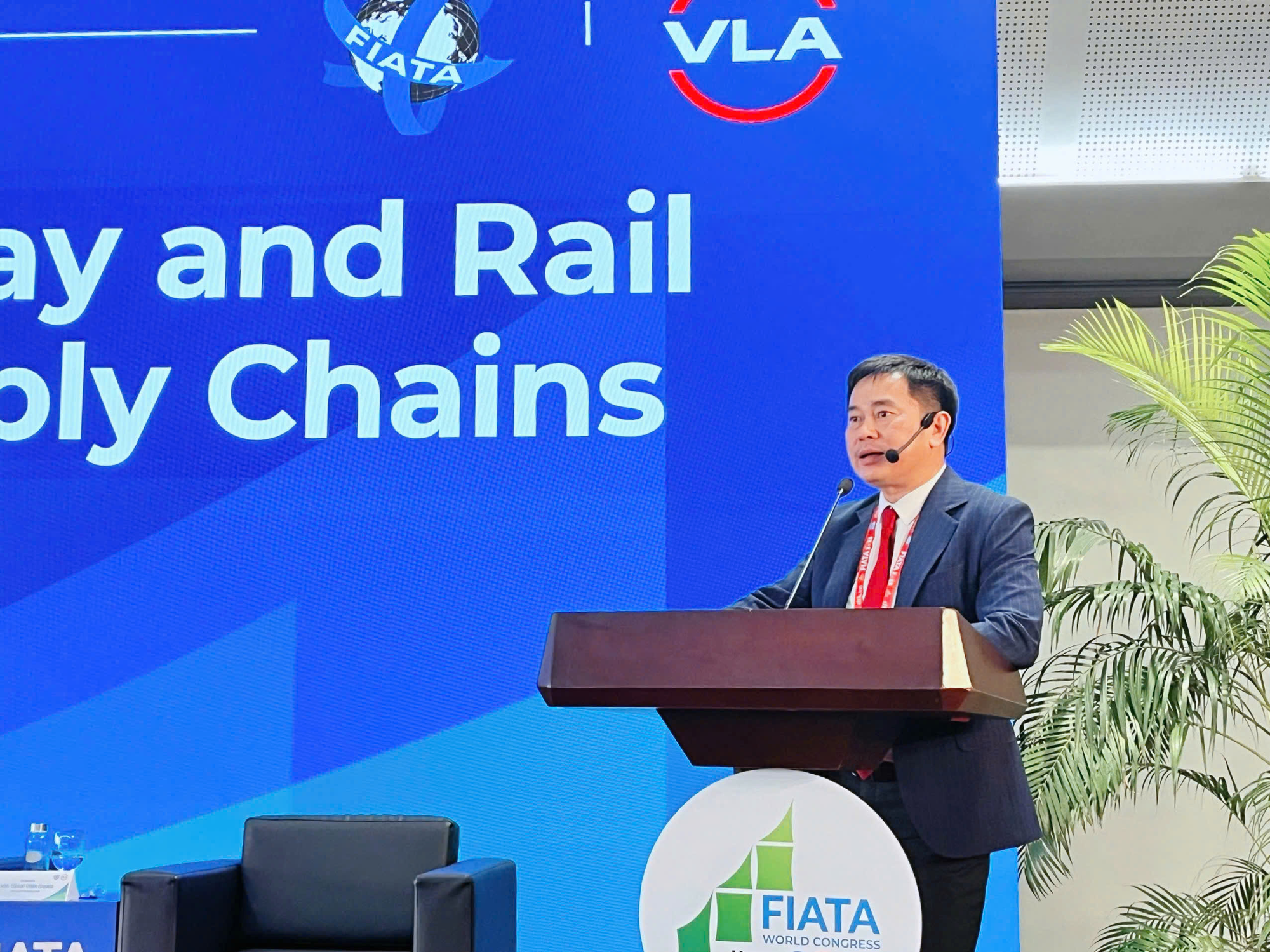
Mr. Tran Tien Dung, Chairman of MACSTAR Group, sharing at the discussion session
Mr. Dung suggested that boosting investment in water and coastal transportation would reduce logistics costs, cut CO₂ emissions, and ease the burden on roads, which currently handle the majority of freight. He proposed simplifying port management procedures, unifying operational standards, and introducing green credit with preferential interest rates to encourage businesses to invest in green transportation.
He stressed that developing the water transportation system is a long-term strategy requiring collaboration among the government, private sector, and international partners to increase the share of river-transported goods to about 20% by 2030.
From Global Experiences to Vietnam’s Green Path
Mr. Lambert Van Dieren, Chairman of Van Dieren Maritime (Netherlands), shared practical insights from Europe, a leader in green logistics.
He advised that for sustainable transportation development, Vietnam should focus on investing in infrastructure serving as “connection hubs”—where railways, seaports, and inland waterways intersect. This seamless connectivity will create efficient logistics corridors, reducing costs and transit times while enhancing Vietnamese goods’ competitiveness in the global market.
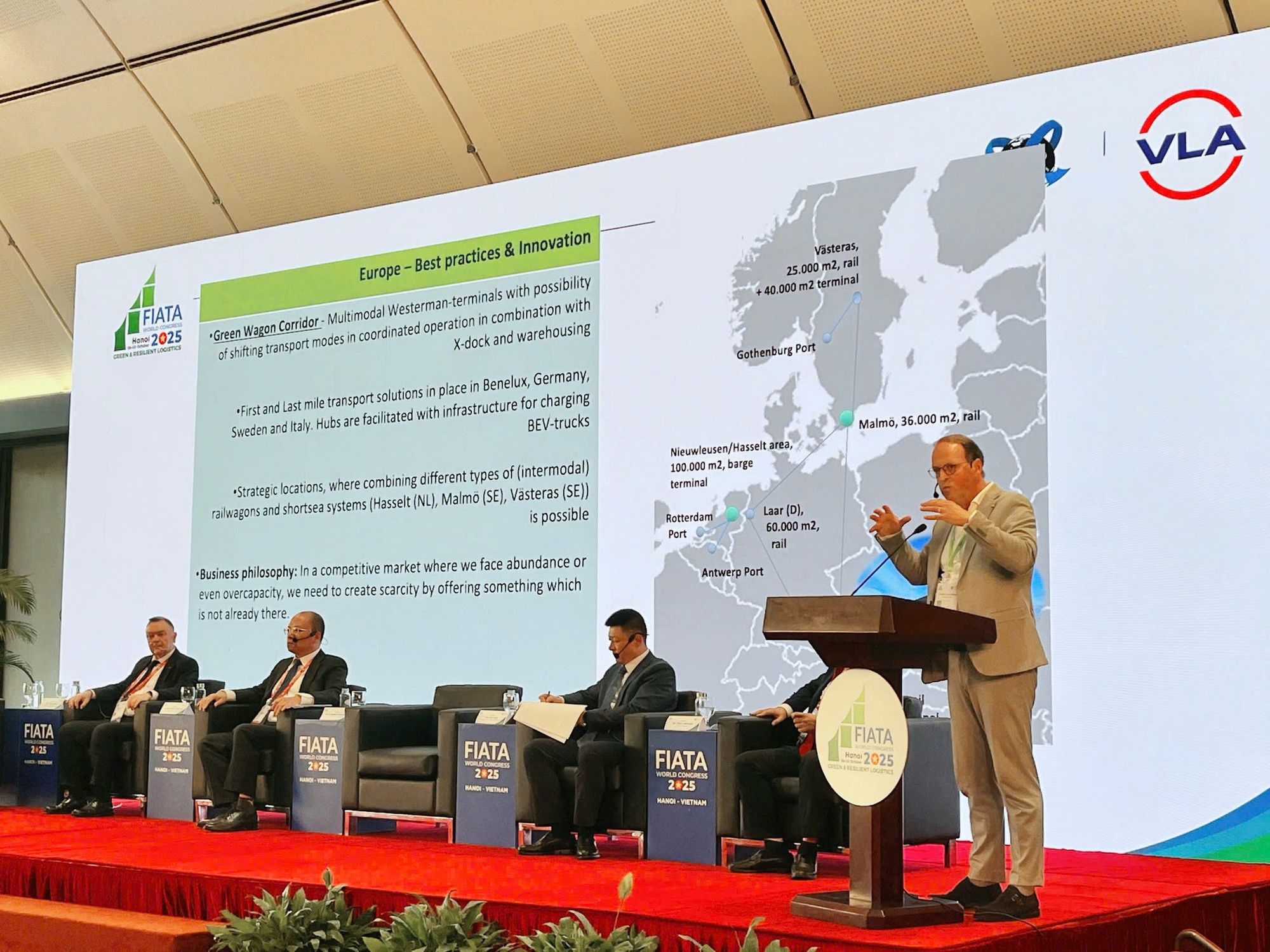
Mr. Lambert Van Dieren, Chairman of Van Dieren Maritime (Netherlands), sharing European experiences
Beyond infrastructure, Mr. Van Dieren emphasized the importance of technology in management and operations. Standardizing data, synchronizing information systems, and digitizing processes will enable Vietnamese logistics companies to integrate more deeply into the global supply chain, where transparency, accuracy, and efficiency are increasingly demanded.
Following Mr. Van Dieren’s insights, Mr. Wei Chen, Deputy General Manager of Overseas Markets at Sinotrans Limited (China), shared China’s practical experiences in developing green transportation. He noted that flexible integration of road, rail, and inland waterways has optimized supply chains while significantly reducing costs and carbon emissions.
According to Mr. Wei Chen, water and rail transportation are becoming critical pillars in emission reduction and energy conservation strategies. However, the biggest challenge remains the lack of connectivity between infrastructure and data, requiring close international cooperation to build a more synchronized, intelligent, and sustainable logistics system.
Additionally, he emphasized that digital transformation and clean energy are inevitable trends in global logistics, not only improving operational efficiency but also contributing to sustainable development and environmental protection goals.
Unlocking EV Potential: Tailored Deployment Strategies for Charging Stations in Ho Chi Minh City
The Ho Chi Minh City People’s Committee has tasked the Director of the Department of Construction with reviewing and updating the city’s planning to prioritize the development of a green transportation infrastructure system. This includes the establishment of electric vehicle charging stations and the provision of clean, green fuel for vehicles. The focus is on leveraging publicly managed land for communal purposes, while minimizing the use of land owned by households and individuals.
Ho Chi Minh City: When Will the Mai Chi Tho Bike Lane Pilot Be Expanded Citywide?
Cycling enthusiasts in Ho Chi Minh City can now enjoy a dedicated bike lane on Mai Chi Tho Street as part of a pilot program. However, plans to expand this initiative face challenges due to limited infrastructure, narrow sidewalks, and other unresolved issues that require immediate attention.

